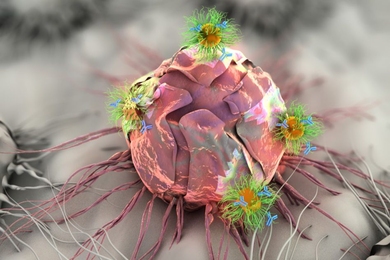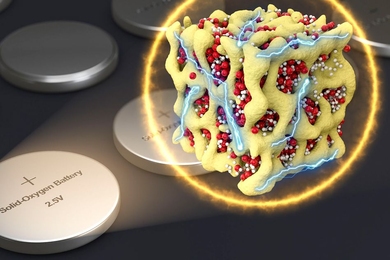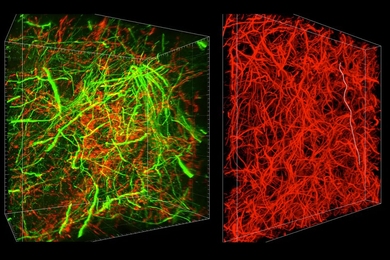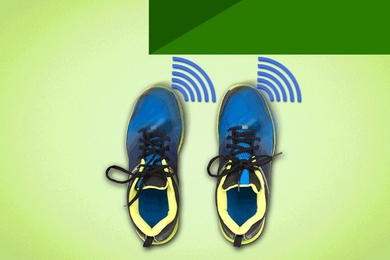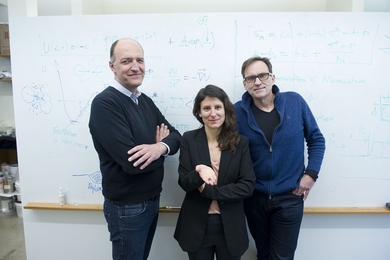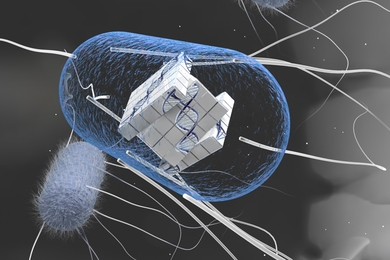Assessing health impacts of policies and plans
New class offers urban planners tools to explore the intersection of city planning and public health.
Patch that delivers drug, gene, and light-based therapy to tumor sites shows promising results
In mice, device destroyed colorectal tumors and prevented remission after surgery.
New lithium-oxygen battery greatly improves energy efficiency, longevity
New chemistry could overcome key drawbacks of lithium-air batteries.
Imaging the brain at multiple size scales
New technique can reveal subcellular details and long-range connections.
New movie screen allows for glasses-free 3-D at a larger scale
Prototype display enables viewers to watch a 3-D movie from any seat in a theater.
Using data to inform the connections between technology and policy
MIT Institute for Data, Systems, and Society research from the Technology and Policy Program highlights multidisciplinary approaches to data-driven policies.
Researchers identify genome-modifying enzyme linked to Rett Syndrome
Deletion of the HDAC3 gene in the brains of mice causes cognitive and social impairments consistent with Rett Syndrome.
Avoiding stumbles, from spacewalks to sidewalks
Vibrating footwear could help astronauts and visually impaired earthlings skirt obstacles.
Designing climate-friendly concrete, from the nanoscale up
New understanding of concrete’s properties could increase lifetime of the building material, decrease emissions.
Scientists program cells to remember and respond to series of stimuli
New approach to biological circuit design enables scientists to track cell histories.
Borrowing from pastry chefs, engineers create nanolayered composites
Method to stack hundreds of nanoscale layers could open new vistas in materials science.
First atmospheric study of Earth-sized exoplanets reveals rocky worlds
Two potentially habitable planets in nearby system are confirmed to be rocky.



